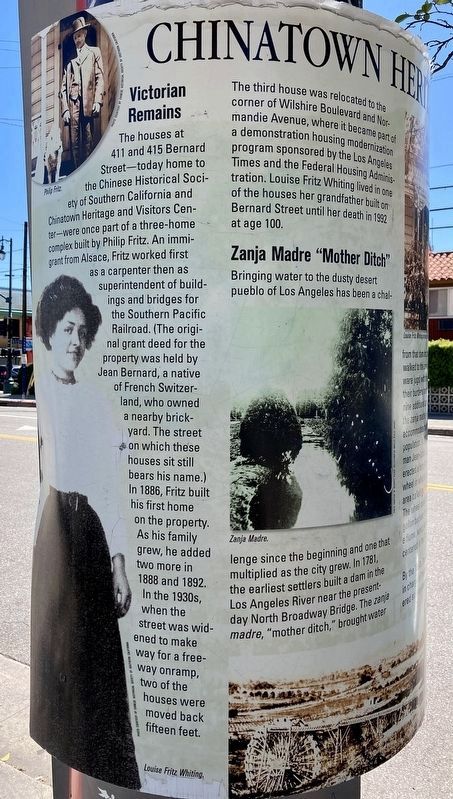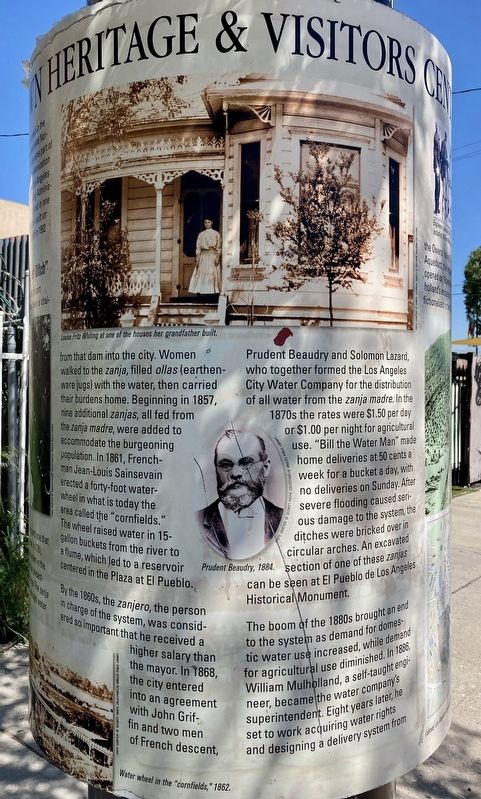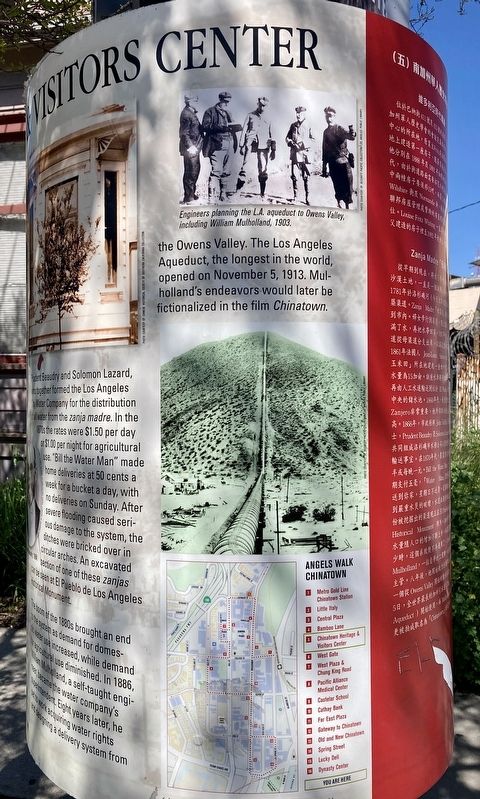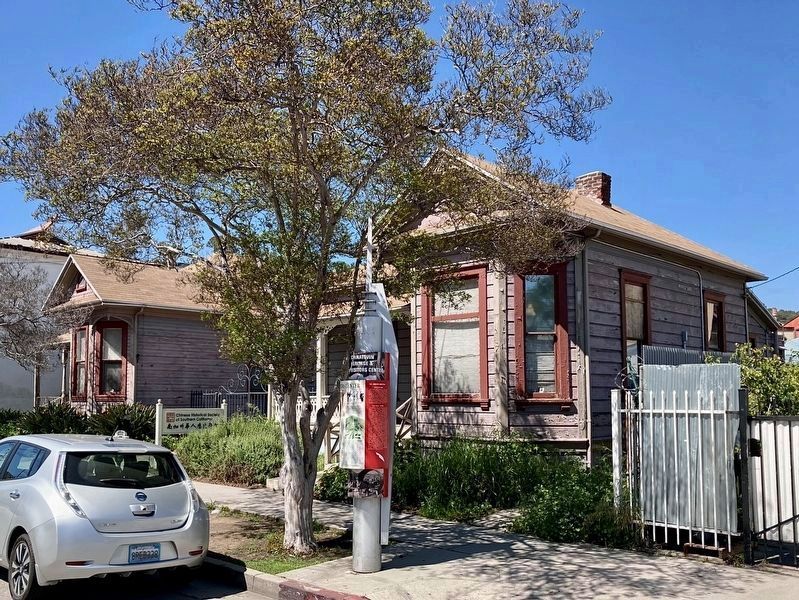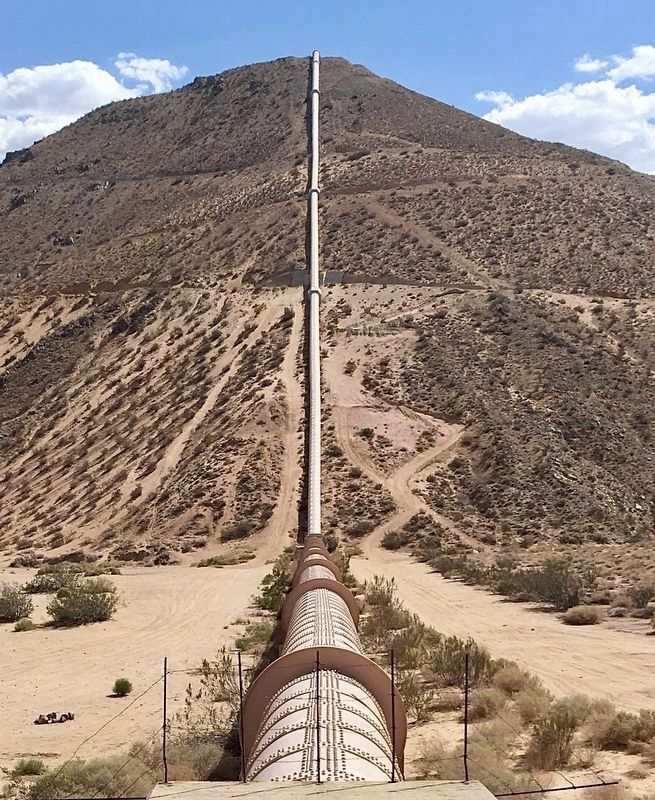Chinatown in Los Angeles in Los Angeles County, California — The American West (Pacific Coastal)
Chinatown Heritage and Visitor Center
Victorian Remains
The houses at 411 and 415 Bernard Street — today home to the Chinese Historical Society of Southern California and Chinatown Heritage and Visitors Center — were once part of a three-home complex built by Philip Fritz. An immigrant from Alsace, Fritz worked first as a carpenter then as superintendent of buildings and bridges for the Southern Pacific Railroad. (The original grant deed for the property was held by Jean Bernard, a native of French Switzerland, who owned a nearby brickyard. The street on which these houses sit still bears his name.) In 1886, Fritz built his first home on the property. As his family grew, he added two more in 1888 and 1892. In the 1930s, when the street was widened to make way for a freeway onramp, two of the houses were moved back fifteen feet.
The third house was relocated to the corner of Wilshire Boulevard and Normandie Avenue, where it became part of a demonstration housing modernization program sponsored by the Los Angeles Times and the Federal Housing Administration. Louise Fritz Whiting lived in one of the houses her grandfather built on Bernard Street until her death in 1992 at age 100.
Zanja Madre "Mother Ditch"
Bringing water to the dusty desert pueblo of Los Angeles has been a challenge since the beginning and one that multiplied as the city grew. In 1781, the earliest settlers built a dam in the Los Angeles River near the present-day North Broadway Bridge. The zanja madre, "mother ditch," brought water from that dam into the city. Women Li walked to the zanja, filled ollas (earthen-ware jugs) with the water, then carried their burdens home. Beginning in 1857, nine additional zanjas, all fed from the zanja madre, were added to accommodate the burgeoning population. In 1861, Frenchman Jean-Louis Sainsevain erected a forty-foot water-wheel in what is today the area called the "cornfields." The wheel raised water in 15-gallon buckets from the river to a flume, which led to a reservoir centered in the Plaza at El Pueblo.
By the 1860s, the zanjero, the person in charge of the system, was considered so important that he received a higher salary than the mayor. In 1868, the city entered into an agreement with John Griffin and two men of French descent, Prudent Beaudry and Solomon Lazard, who together formed the Los Angeles City Water Company for the distribution of all water from the zanja madre. In the 1870s the rates were $1.50 per day or $1.00 per night for agricultural use. "Bill the Water Man" made home deliveries at 50 cents a week for a bucket a day, with no deliveries on Sunday. After severe flooding caused serious damage to the system, the ditches were bricked over in circular arches. An excavated section of one of these zanjas can be seen at El Pueblo de Los Angeles Historical Monument.
The boom of the 1880s brought an end to the system as demand for domestic water use increased, while demand for agricultural use diminished. In 1886, William Mulholland, a self-taught engineer, becametie water company's superintendent. Eight years later, he set to work acquiring water rights and designing a delivery system from the Owens Valley. The Los Angeles Aqueduct, the longest in the world, opened on November 5, 1913. Mulholland's endeavors would later be fictionalized in the film Chinatown.
Erected by City of Los Angeles.
Topics. This historical marker is listed in these topic lists: Asian Americans • Education • Industry & Commerce. A significant historical year for this entry is 1886.
Location. 34° 4.022′ N, 118° 14.178′ W. Marker is in Los Angeles, California, in Los Angeles County. It is in Chinatown. Marker is on Bernard Street west of Broadway, on the right when traveling west. Touch for map. Marker is at or near this postal address: 415 Bernard St, Los Angeles CA 90012, United States of America. Touch for directions.
Other nearby markers. At least 8 other markers are within walking distance of this marker. West Gate (about 600 feet away, measured in a direct line); Central Plaza (about 600 feet away); Dr. Sun Yat-Sen (about 600 feet away); Bruce Lee Statue (about 800 feet away); Sun Mun Way (approx. 0.2 miles away); Welcome to the Graveyard (approx. 0.2 miles away); Zanja Madre (approx. 0.2 miles away); Pacific Alliance Medical Center (approx. ¼ mile away). Touch for a list and map of all markers in Los Angeles.
Also see . . .
1. Angels Walk L.A. Self-guided walking tours of historic neighborhoods in Los Angeles. The Chinatown Heritage marker is part of the Chinatown walk. (Submitted on April 5, 2023.)
2. Chinese Historical Society. (Submitted on April 5, 2023.)
Credits. This page was last revised on July 3, 2023. It was originally submitted on April 5, 2023, by Craig Baker of Sylmar, California. This page has been viewed 101 times since then and 22 times this year. Photos: 1, 2, 3, 4, 5. submitted on April 5, 2023, by Craig Baker of Sylmar, California.
